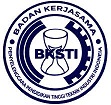Cluster-specific Bi-LSTM models for improved pharmaceutical sales forecasting
Abstract
Keywords
Full Text:
PDFReferences
G. Merkuryeva, A. Valberga, and A. Smirnov, “Demand forecasting in pharmaceutical supply chains: A case study,” Procedia Comput. Sci., vol. 149, pp. 3-10, 2019, doi: 10.1016/j.procs.2019.01.100.
F. Kochakkashani, V. Kayvanfar, and A. Haji, “Supply chain planning of vaccine and pharmaceutical clusters under uncertainty: The case of COVID-19,” Socio-Econ. Plan. Sci., vol. 87, 2023, doi: 10.1016/j.seps.2023.101602.
E. Hofmann, H. Sternberg, H. Chen, A. Pflaum, and G. Prockl, “Supply chain management and industry 4.0: Conducting research in the digital age,” Int. J. Phys. Distrib. Logist. Manag., vol. 49, pp. 945-955, 2019, doi: 10.1108/IJPDLM-11-2019-399.
I. C. Reinhardt, J. C. Oliveira, and D. T. Ring, “Current perspectives on the development of industry 4.0 in the pharmaceutical sector,” J. Ind. Inf. Integr., vol. 18, 2020, doi: 10.1016/j.jii.2020.100131.
T. Ramesh and V. Santhi, “Exploring big data analytics in health care,” Int. J. Intell. Netw., vol. 1, pp. 135-140, 2020, doi: 10.1016/j.ijin.2020.11.003.
D. N. Ouedraogo, “Interpretable machine learning model selection for breast cancer diagnosis based on K-means clustering,” Appl. Med. Inform. Original Res., vol. 43, no. 3, pp. 91-102, 2021.
G. S. Palupi and M. N. A. Fakhruzzaman, “Indonesian pharmacy retailer segmentation using recency frequency monetary-location model and ant K-means algorithm,” Int. J. Electr. Comput. Eng., vol. 12, no. 6, pp. 6132-6139, 2022, doi: 10.11591/ijece.v12i6.
L. T. Murry, J. Urmie, and A. Olson, “Item development for patient-centered care preferences using a three-archetype heuristic: An exploratory study,” Explor. Res. Clin. Soc. Pharm., vol. 9, 2023, doi: 10.1016/j.rcsop.2023.100251.
K. E. Setiawan, A. Kurniawan, A. Chowanda, and D. Suhartono, “Clustering models for hospitals in Jakarta using Fuzzy C-means and K-means,” Procedia Comput. Sci., vol. 216, pp. 356-363, 2023, doi: 10.1016/j.procs.2022.12.146.
A. Mousavi, M. Mohammadzadeh, and H. Zare, “A clustering approach to identify the organizational life cycle,” J. Open Innov. Technol. Market Complex, vol. 8, no. 3, 2022, doi: 10.3390/joitmc8030108.
N. N. Arief, A. Gustomo, M. R. Roestan, A. N. A. Putri, and M. Islamiaty, “Pharma 4.0: analysis on core competence and digital leveling implementation in the pharmaceutical industry in Indonesia,” Heliyon, vol. 8, no. 8, 2022, doi: 10.1016/j.heliyon.2022.e10347.
J. Devaraj et al., “Forecasting of COVID-19 cases using deep learning models: Is it reliable and practically significant?,” Results Phys., vol. 21, 2021, doi: 10.1016/j.rinp.2021.103817.
Z. Luo, L. Zhang, N. Liu, and Y. Wu, “Time series clustering of COVID-19 pandemic-related data,” Data Sci. Manag., vol. 6, no. 2, pp. 79-87, 2023, doi: 10.1016/j.dsm.2023.03.003.
S. Y. Ilu and R. Prasad, “Improved autoregressive integrated moving average model for COVID-19 prediction by using statistical significance and clustering techniques,” Heliyon, vol. 9, no. 2, 2023, doi: 10.1016/j.heliyon.2023.e13483.
G. Hole, A. S. Hole, and I. McFalone-Shaw, “Digitalization in the pharmaceutical industry: What to focus on under the digital implementation process?,” Int. J. Pharm., vol. 3, 2021, doi: 10.1016/j.ijpx.2021.100095.
N. S. Arden, A. C. Fisher, K. Tyner, L. X. Yu, S. L. Lee, and M. Kopcha, “Industry 4.0 for pharmaceutical manufacturing: Preparing for the smart factories of the future,” Int. J. Pharm., vol. 602, 2021, doi: 10.1016/j.ijpharm.2021.120554.
Y. Kim, E. Atukeren, and Y. Lee, “A new digital value chain model with PLC in biopharmaceutical industry: The implication for open innovation,” J. Open Innov. Technol. Market Complex, vol. 8, no. 2, 2022, doi: 10.3390/joitmc8020063.
A. A. Halwani et al., “Current status and vision of local pharmaceutical industries in Saudi Arabia: The focus on nano medicines,” Saudi Pharm. J., vol. 31, no. 8, 2023, doi: 10.1016/j.jsps.2023.06.007.
I. Duarte, B. Mota, T. Pinto-Varela, and A. P. Barbosa-Póvoa, “Pharmaceutical industry supply chains: How to sustainably improve access to vaccines?,” Chem. Eng. Res. Des., vol. 182, pp. 324-341, 2022, doi: 10.1016/j.cherd.2022.04.001.
H. S. Lee and B. Y. Chang, “A new stochastic SIQR (Susceptible-Infected -Quarantine-Removed) model with two delays: Forecasting COVID-19 diffusion,” Int. J. Ind. Eng.: Theory, Appl. Pract., vol. 30, no. 3, 2023, doi: 10.23055/ijietap.2023.30.3.8365.
S. Chandrasekar, K. Subburathinam, and K. Srihari, “Analysis for heart disease prediction using deep neural network and VGG_19 convolutional neural network”, Int. J. Ind. Eng.: Theory, Appl. Pract., pp. 876-889, 2023, doi: 10.23055/ijietap.2023.30.4.8603.
E. Hofmann and E. Rutschmann, “Big data analytics and demand forecasting in supply chains: a conceptual analysis,” Int. J. Logist. Manag., vol. 29, no. 2, pp. 739-766, 2018, doi: 10.1108/IJLM-04-2017-0088.
J. Lin, J. Ma, J. Zhu, and Y. Cui, “Short-term load forecasting based on LSTM networks considering attention mechanisms,” Int. J. Electr. Power Energy Syst., vol. 137, 2022, doi: 10.1016/j.ijepes.2021.107818.
H. Shubo et al., “Short-Term load forecasting based on mutual information and BI-LSTM considering fluctuation in importance values of features,” IEEE Access, 2023, doi: 10.1109/ACCESS.2023.3323403.
L. Zhou, C. Zhao, N. Liu, X. Yao, and Z. Cheng, “Improved LSTM-based deep learning model for COVID-19 prediction using optimized approach,” Eng. Appl. Artif. Intell., vol. 122, 2023, doi: 10.1016/j.engappai.2023.106157.
S. Khalil, C. Amrit, T. Koch, and E. Dugundji, “Forecasting public transport ridership: management of information systems using CNN and LSTM architectures,” Procedia Comput. Sci., vol. 184, pp. 283-290, 2021, doi: 10.1016/j.procs.2021.03.037.
A. Rayan and A. S. Alaerjan, “An improved crow search optimization with Bi-LSTM model for identification and classification of COVID-19 infection from chest X-Ray images,” Alexandria Eng. J., vol. 76, pp. 787-798, 2023, doi: 10.1016/j.aej.2023.06.052.
B. Sirisha, K. K. C. Goud, and B. T. V. S. Rohit, “A Deep Stacked Bidirectional LSTM (SBiLSTM) model for petroleum production forecasting,” Procedia Comput. Sci., vol. 218, pp. 2767-2775, 2023, doi: 10.1016/j.procs.2023.01.248.
I. V. Pustokhina, D. A. Pustokhin, and E. L. Lydia, “Hyperparameter search based convolution neural network with Bi-LSTM model for intrusion detection system in multimedia big data environment,” Multimed. Tools Appl., vol. 81, pp. 34951-34968, 2022, doi: 10.1007/s11042-021-11271-7.
M. Ziaee, H. K. Shee, and A. Sohal, “Big data analytics in the Australian pharmaceutical supply chain,” Ind. Manag. Data Syst., vol. 123, no. 5, pp. 1310-1335, 2023, doi: 10.1108/IMDS-05-2022-0309.
S. Metlek, “A new proposal for the prediction of an aircraft engine fuel consumption: a novel CNN-BiLSTM deep neural network model,” Aircraft Eng. Aerosp. Technol., vol. 95, no. 5, pp. 838-848, 2023, doi: 10.1108/AEAT-05-2022-0132.
V. R. Kota and S. D. Munisamy, “High accuracy offering attention mechanisms based deep learning approach using CNN/Bi-LSTM for sentiment analysis,” Int. J. Intell. Comput. Cybern., vol. 15, no. 1, pp. 61-74, 2022, doi: 10.1108/IJICC-06-2021-0109.
DOI: http://dx.doi.org/10.62870/jiss.v10i2.26898
Refbacks
- There are currently no refbacks.
 is supported by
is supported by








